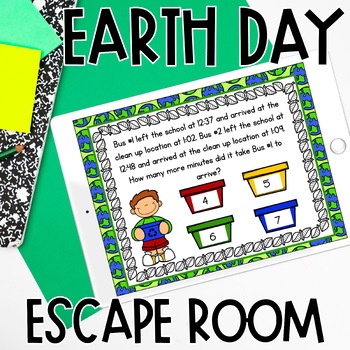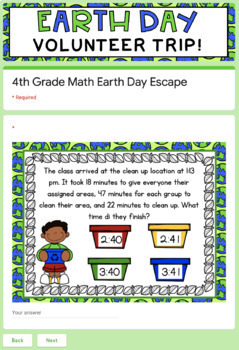Digital Earth Day Math Escape Room 4th Grade Math Review for Google Forms™
- Google Drive™ folder
- Internet Activities

What educators are saying
Description
This digital Earth Day escape room for 4th grade utilizes Google Forms™ to give students a fun and engaging math review option during April. In this activity, students are tasked with helping the students in the story collect items to recycle by answering a series of challenge questions. All questions are presented as word problems.
Standards covered:
Multiplicative Comparisons (4.OA.2)
Multiply 3-Digits by 1-Digit (4.NBT.5)
Divide 4-Digits by 1-Digit (4.NBT.6)
Adding & Subtracting Like Fractions (4.NF.3)
Decimal Notation (4.NF.6)
Converting Measurements (4.MD.1)
Time Word Problems (4.MD.2)
Area Word Problems (4.MD.3)
Your feedback is important!
Feedback helps other teachers find great resources for their classroom AND rewards you with credit to use on future TPT purchases! You can leave feedback for purchased and free products from your "My Purchases" page.
Follow me to get 50% off new resources!
Click the green star under my logo (on the right side of this page) to grab my new resources half off for the first 48 hours! All products (excluding bundles) are discounted.





